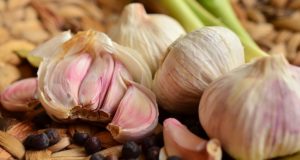Heirloom sweet corn, picked right from the stalk and then boiled immediately, is one of the most highly anticipated treats of the summer garden.
Corn originated as a modest grass in the Mexican plateaus and spread north and south from there. Native Americans cultivated corn for thousands of years, developing varieties with stronger stalks, larger ears and more kernels.
Sweet corn, as opposed to field corn, is a genetic mutation of field corn that has a higher sugar content. Over the centuries, Native Americans selectively bred sweet corn and developed stable varieties. They shared these varieties with the Europeans, who further refined them. By the beginning of the twentieth century, sweet corn became easily available to the gardening public in America.
Although our ancestors grew open-pollinated sweet corn with ease, after decades of hybridized sweet corn, growing heirloom sweet corn can be challenging. It takes even successful gardeners sometimes a few years to find an heirloom sweet corn variety that will grow in a given area.
Keys to Success
To maximize chances of success, following these tips (in addition to adequate water and sunlight) to get a good yield of heirloom sweet corn:
Space. There is simply no way around it. Corn needs space to get enough nutrients, water, and sunlight. On average, most varieties require 12 to 16 square inches per plant. If you grow corn in blocks, this means no more than one plant per square foot. If you use rows, this means plants about every four inches apart with rows that are three feet apart.
Pollination. Corn relies on wind to transfer pollen from the tassels to the silk. Since each silk represents a kernel of corn (assuming the individual silk is pollinated), thorough pollination is required to get ears full of kernels. Although the general recommendation is that corn needs to be planted in at least four rows, I’ve found that heirloom corn requires five or six rows.
The standard for yellow open pollinated sweet corn for over a century.
Nutrients. Corn needs nitrogen and lots of it. The best way to prepare the soil for corn is to grow a nitrogen-fixing cover crop over the winter or in early spring. In mild winter areas, fava beans work well. Then after planting the corn, wait until it is about a foot high and apply garden compost, well-composted manure, or bone meal. Of course, you can buy expensive artificial nitrogen sources, but living off the grid means growing sustainably, using materials on hand, such as saved fava bean seeds and compost.
Temperature. Most sweet corn requires a steady 65-degree soil temperature for germination. Wait until the soil is warm enough or the corn will either not germinate or will result in deficient plants.
The Intangibles
Patience and tolerance are also needed when growing heirloom sweet corn. You need patience because it takes time to find the right heirloom corn for you area. I’m an experienced organic farmer, but it took me three years to find the variety I could successfully grow in my area. Some varieties like it hot and dry, others do well in the cooler wet climates of the Northeast.
Tolerance is required because heirloom sweet corn, grown organically, will not always resemble the large, perfectly shaped, iron-rod straight ears of hybrid sweet corn that are grown with inorganic fertilizers and environmentally unfriendly pesticides. Instead, expect corn plants that vary in height, shade of green, number of ears, and number of suckers. For example, this year I grew Festivity heirloom sweet corn. The corn germinated over the course of a week, grew unevenly, and resulted in plants from four to seven feet tall. Some plants had one stalk and one ear of corn, while others had one stalk with multiple ears and multiple suckers. The ears matured over two weeks, and ranged from half to two-thirds the size you’ll find in grocery stores. However, the most beautiful result was the color. Some ears were all yellow, while others were a mix of yellow and deep purple kernels, to a couple of ears that were all deep purple.
Varieties
In this day and age of hybridization and genetic crops, there is a limited number of open-pollinated sweet corn varieties. One of the most common is Country Gentlemen, a shoepeg type (meaning the kernels are irregularly arranged, not in neat rows). Country Gentlemen is best suited to the mid-Atlantic area and produces two eight-inch ears with white kernels. Golden Bantam is another favorite, well-adapted to the Northeast, producing six-inch ears with yellow kernels. Texas Honey June, despite its name, is often grown throughout the United States, yielding two or three medium-sized ears per plant, with white kernels. For those living in the Southwest, try Anasazi, one of the oldest sweet corns in existence, which yield beautiful multi-colored ears.
Conclusion
Heirloom corn can be difficult to grow, and requires a lot of space, water, and nitrogen. However, the hard work and patience is worth it, resulting in an old-fashioned deep, sweet flavor that you can look forward to year after year.
 Off The Grid News Better Ideas For Off The Grid Living
Off The Grid News Better Ideas For Off The Grid Living





